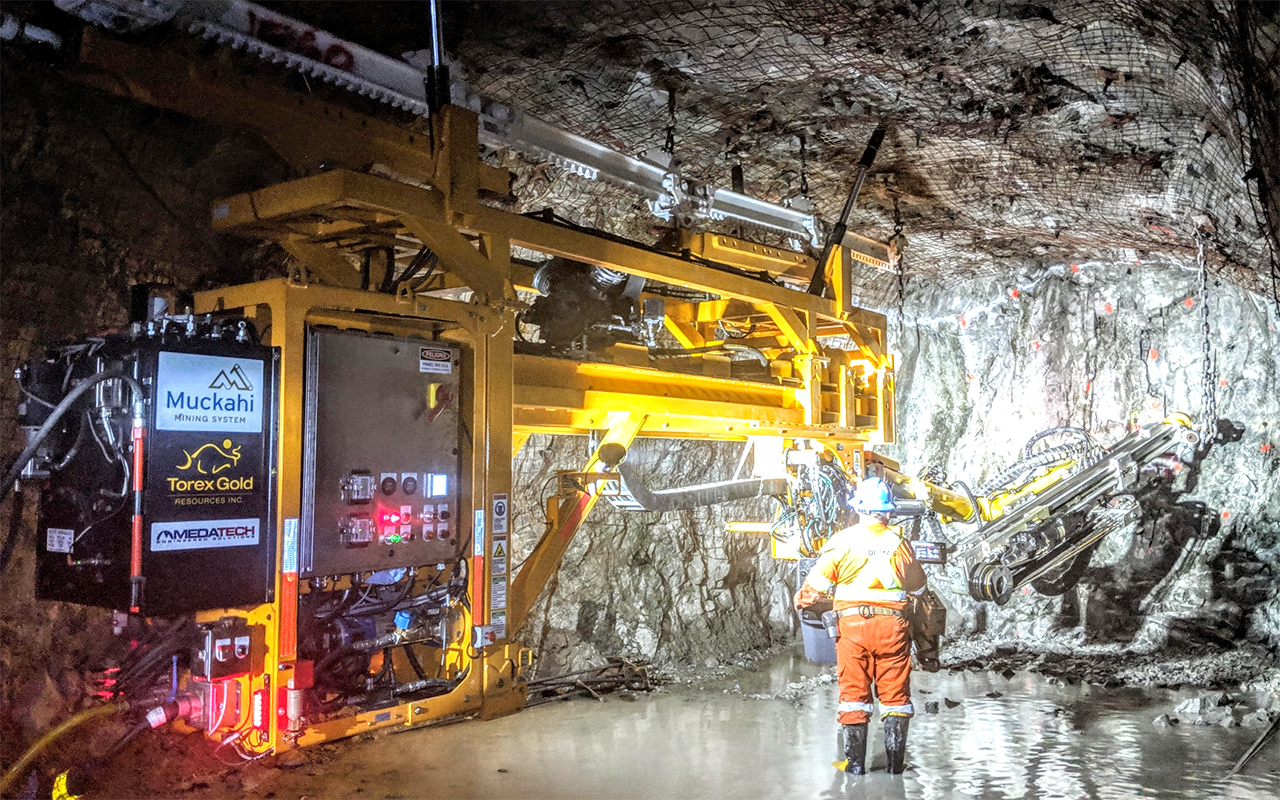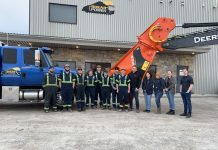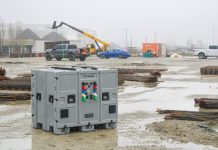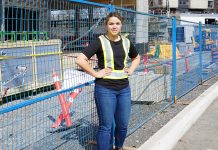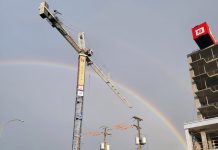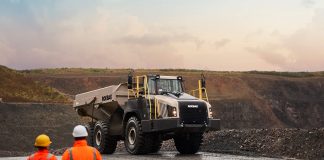The Muckahi monorail system can cut time-to-revenue by 80 per cent
It’s been more than 30 years since Fred Stanford first started imagining a more efficient way to get ore out of hard-rock mines.
For Stanford, president and CEO of Toronto-based Torex Gold Resources, mining isn’t about drilling, blasting and mucking rock — it’s a logistics business concerned with moving ore as fast and efficiently as possible.
Conventional ore mining faces steep initial development costs and long timelines due to size, shape and length of the tunnels needed, not to mention HVAC systems capable of clearing industrial diesel exhaust fumes. Stanford’s idea involves using equipment and resources in a surgical way to mine narrower ore bodies more efficiently.
The Muckahi System
The Muckahi System was engineered by MEDATech in close collaboration with Stanford. It’s a complete re-think of underground mining involving four pragmatic paradigm shifts in logistics, including:
- Continuous conveyor transport of muck directly from face/stope to surface.
- Steep 30-degree ramps, a quarter of the length of conventional ramps.
- Twin roof-mounted monorails (inbound/outbound) and purpose-built monorail-mounted electrified equipment.
- Minimal underground infrastructure: no crusher stations, muck bins or supply storage.
Long, skinny vehicles for transportation of supplies and people at steep angles is not a tall order, but loading muck into a long and skinny vehicle from the rear is more of a challenge. Stanford previously tackled the problem with the Rail-Veyor system, which demonstrated what worked well and what didn’t. His ‘a-ha’ moment came when he figured out that a roof-mounted monorail was the key to loading. Still, he had to get Muckahi from concept to reality.
“Not all engineers are willing to think outside the box and try something completely different,” Stanford said. “A lot of them put on what I call a ‘black hat’ and say, ‘yeah, but.. yeah, but…’ and then there are others that say, ‘let’s figure this out and make it work really well.’ I like that kind of engineer,” Stanford said.
Finding the right partner

Torex originally tried working with other, larger engineering firms, but cost, focus and agility were issues. The collaboration that would lead to Muckahi began when Stanford and Robert Rennie, president of MEDATech, met at the Las Vegas MineExpo in September 2016.
“It’s all Fred’s higher-level vision and our ideas, studies and working through the details that made this work,” Rennie said.
The exploratory nature of the work means that it’s never a straight line. Rennie describes MEDATech’s work on the project as a moving target.
“The test requirements change, we’ve changed what the equipment looks like —completely rebuilding it in some cases. Our ability to be agile and responsive to changing client requirements are what make MEDATech Engineering what we are.”
According to Stanford, Rennie’s significant experience in mining operations is also an important factor — understanding the processes.
“His team can bounce technical ideas off of him and know if it’s going to work,” Stanford said.
A narrow shaft at 30 degrees covers about a quarter the distance of wide, spiralling tunnels at a 10 to 15 per cent draft. The Muckahi System makes use of such shafts both to start producing more quickly, and to get the ore body to the surface faster. The system also uses bidirectional traffic flow, which allows for continuous operations at the face with no bottlenecks to slow things down. With Muckahi, production speed is not limited to a loader’s ability to scoop muck, back into a turnout, drive off, dump and come back for another load.
“We have a piece of equipment that is continually pulling material out of the face and in theory we are doing other operations at the face while that’s happening,” Rennie said. “That means we are cycling each face faster.”
The benefits of the technology are significant, including up to:
- 30 per cent reduction in underground capital expenditure.
- 30 per cent reduction in operating expenses.
- 80 per cent less time between investment and revenue.
- 95 per cent fewer underground greenhouse gas emissions.
Technical know-how

The Muckahi System is based on operating from a roof-mounted monorail, stabilizing equipment to it, reaching drifts where necessary and getting the right coverage for drilling and loading materials. Practically, once work in a certain area is complete all components are reused elsewhere, including the rail, which is removed and bolted into the roof of a new tunnel.
Muckahi specifications have required MEDATech to produce narrow equipment that can perform all mining operations, hanging from a single rail on a steep grade. According to Rennie, the solutions MEDATech came up with surprised even Becker Mining Systems, the company that built the rail and makes equipment that typically runs on it.
“Becker told us originally that we weren’t going to be able to drill from the rail and do other operations like load, place ground support, muck, et cetera. We ran the numbers and decided we could. We had them do some tests on their end that proved all of these things are doable. We’ve also since proven the equipment in the drift, so we know for sure that it works.”
The foundation for Muckahi is a rail hung from a set of chains bolted into the roof of the mine and guyed out to either side. The flex inherent in this setup helps distribute the load down the rail and manage torque. Reaching the face off to the side of the rail is accomplished by planting hydraulic stingers up against the roof of the mine on the other side. The challenge, of course, was to achieve sufficient stabilization without overloading the bolts. Adjustable stinger relief levels protect the rails. In practice, the system works well, with zero bolt failures.
Practical testing

The breadth of equipment that MEDATech developed and continues to develop has involved pairing up technical requirements: mining function and rail; the need for a platform, a drill, a scaler and other components; and getting them to work on the monorail. In each case, component stability and function has been tested extensively.
According to Stanford, the question is no longer whether, but how fast the system works. MEDATech and Torex are in the process of finding that out at a Torex mine in Guerrero, Mexico. “If I can drive tunnels at three, five, 10 metres a day rather than two, that makes a huge difference in my planning,” he said. “Once we find out how fast we can drive tunnels of different sizes and gradients and how fast we can extract ore, we’ll be able to understand just how fast and efficient we can make mining.”
MEDATech has helped to make Muckahi a reality through creative, practical engineering design-and-build capability coupled with a can-do attitude. For Stanford, the magic lies in the application.
“I love coming up with new ideas, but I actually need to build something,” he said. “MEDATech uses my ideas, adjusts, finds cost-effective solutions to the inevitable roadblocks and simply gets it done.”

